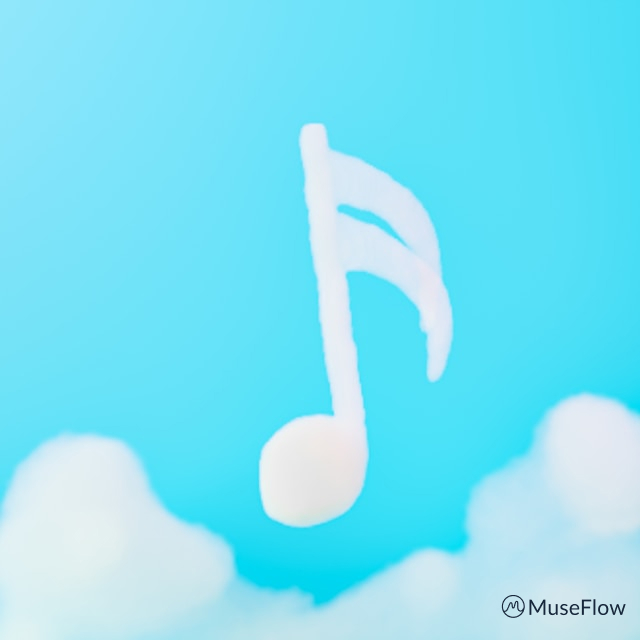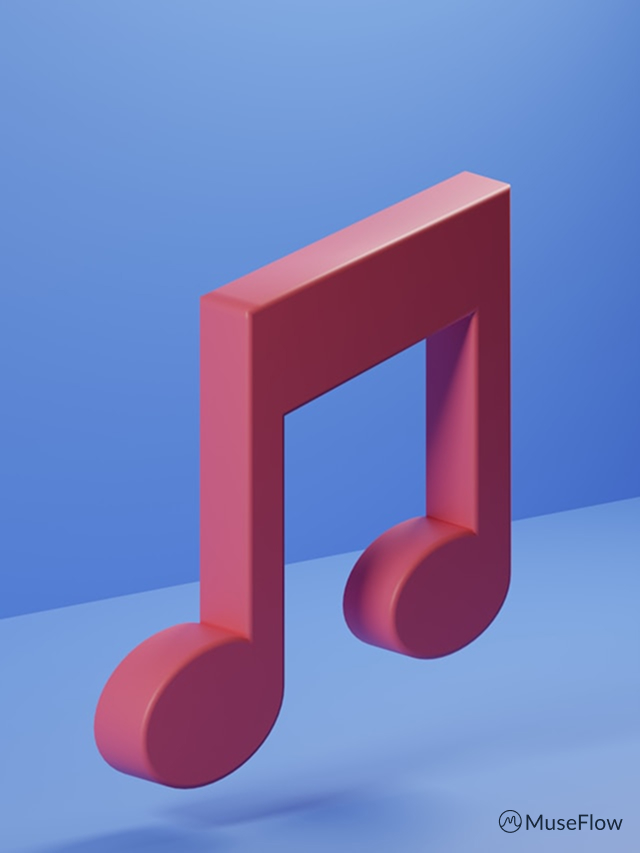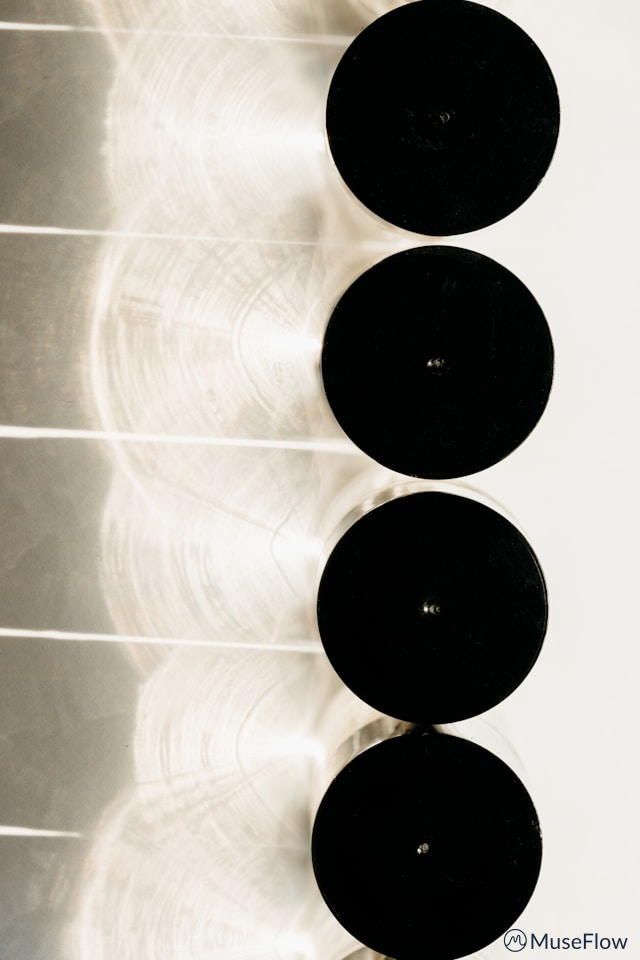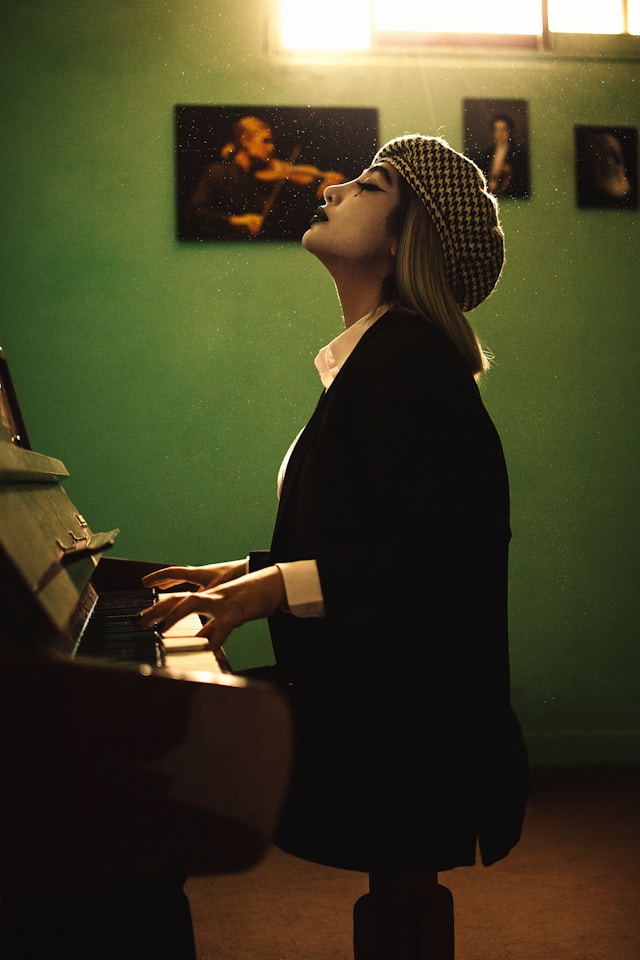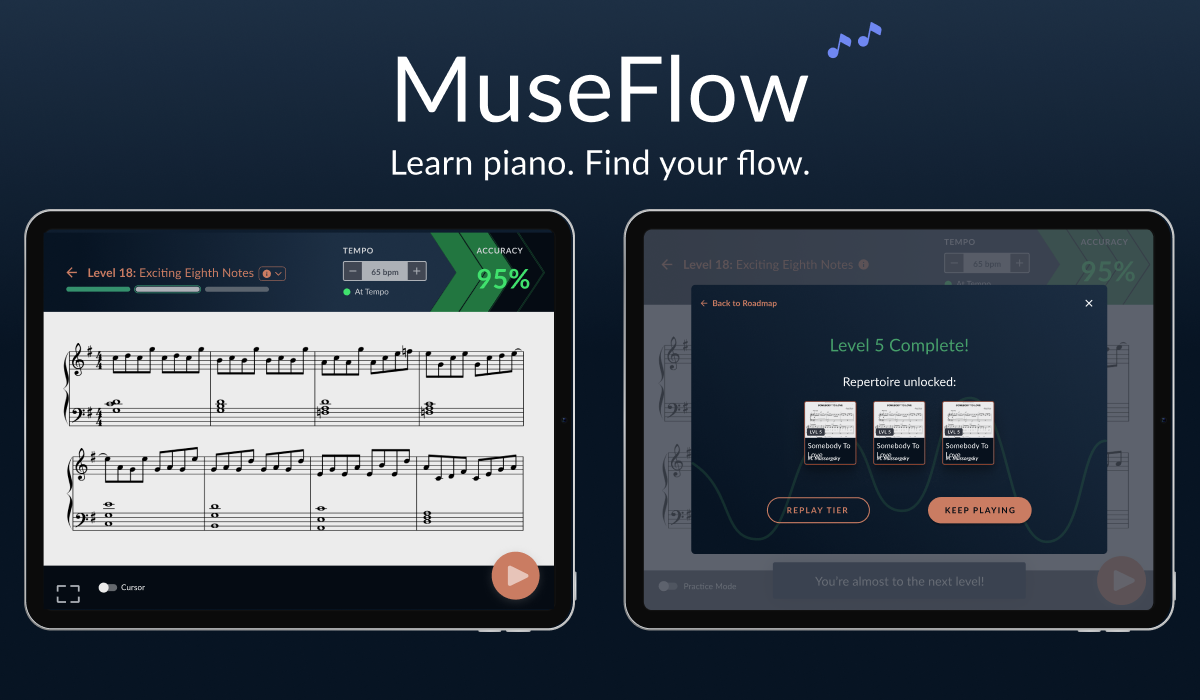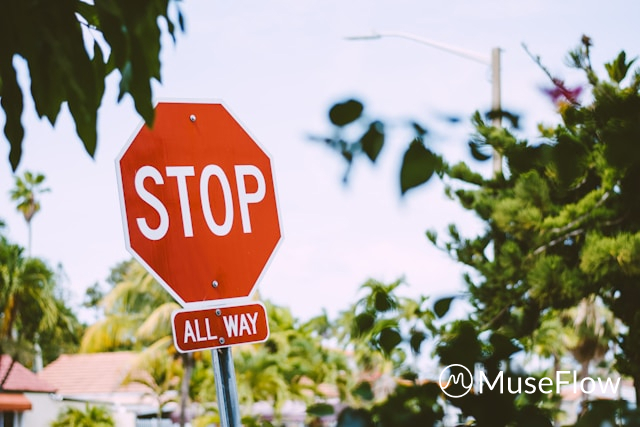What is the Best App for Self-Taught Pianists? Discover MuseFlow!
Respect to anyone who is learning piano by themselves. It requires a lot of discipline and patience. It's an exciting, but definitely also a challenging, journey. As a self-taught pianist, it’s important to find the right resources and tools to guide you. It will make all the difference. So, what is the best app for self-taught pianists? It’s a new innovative app called MuseFlow. This app has been designed to make piano learning accessible, engaging, and more effective for everyone! Below are 5 quick reasons why this AI software is the best app for self-taught pianists.

Use MuseFlow today! It's Free.
1. Personalized Learning with AI
It’s 2024 so MuseFlow is using the best Artificial Intelligence (AI) tools to personalize your learning experience. Traditional old methods often follow a one-size-fits-all approach. These can be frustrating for self-taught learners who progress at their own pace. The California tech company strategically uses AI to assess your unique skill level. It then adapts lessons to suit your needs. That means you are always challenged but never overwhelmed.
The AI tracks your progress and provides feedback in real-time. This helps you correct mistakes immediately and develop better techniques from the start. The earlier bad habits are caught, the better for you. This personalized approach not only makes learning more efficient but also more enjoyable for you... You can learn at your own pace & focus on areas that need improvement. Who doesn’t want a fun but productive learning session?

2. App for Self-Taught Piano Players Offers Real-Time Feedback
One of the biggest challenges for self-taught pianists is the lack of immediate feedback. You may have already gotten so far, but you can hit a wall when you don’t know where you should improve. Without a teacher or coach to guide you, it’s easy to develop bad habits as mentioned earlier. That can be hard to break later on. MuseFlow solves this problem by providing real-time feedback on your playing. As you practice, the app listens to your performance and then offers instant corrections on notes, timing, and technique.
Feedback is crucial for self-learners, it really helps you identify and fix mistakes right away. It’s like having a personal (friendly) tutor available 24/7. One that is guiding you through each practice session without getting annoyed or annoying... and by receiving feedback as you play, you can make adjustments in real-time. It’s genius, you have to try it to really see and experience it.

3. Engaging & Very Fun Learning Experience
Learning piano should be fun, not a chore you don’t look forward to... The learning app for self taught pianists has many gamification elements that are added to the learning process to keep you highly motivated. With progress bars, achievement badges and screens, and interactive tutorials and challenges, each practice session feels like a game. This provides a modern and better learning experience. Gamified approaches make learning enjoyable and keeps you and others coming back for more fun, which means more learning.
Many self-taught pianists using MuseFlow have found that the app’s engaging features make it easier to stick with their practice routines; and we all know how hard it is to stick to routines! The feeling of achievement you get from earning badges & completing challenges can be so incredibly motivating… MuseFlow turns piano practice into an exciting adventure, which helps you stay committed to your learning goals.

4. Entering the Flow State with MuseFlow
One of the most powerful aspects of MuseFlow is its ability to help you enter a state of "flow," where you are fully immersed and focused on your practice! This flow state is often described as a feeling of being "in the zone," where time seems to fly by in the best way possible. You are completely engaged in the task at hand and super focused. The software’s adaptive learning paths, real-time feedback, and interactive elements are all designed to facilitate this state.
Through the way the piano lessons app works, you will be challenged with tasks that are just at the right level of difficulty. The lessons keep your brain engaged and focused in the perfect state of learning. This deep concentration not only makes learning more enjoyable but also significantly enhances your ability to retain new information and develop skills more quickly. We have all been in those situations where we have been super focused and time just flies by. The flow state is a key factor in making your practice sessions more productive and rewarding.

5. Founders' Expertise & Community Support
One of the reasons MuseFlow is so popular is the expertise behind its development. Some of the founders started as self-taught pianists themselves. They understand the challenges and frustrations that come with learning on your own. This is why they’ve designed the app to address these challenging issues. Their firsthand experience and passion for music education are very evident in the app’s thoughtful features and user-friendly design!
Additionally, this midi piano lessons app has built a supportive community of learners. Many self-taught pianists are using the app and are increasing their learning curve at an unbelievable pace. This sense of community can be incredibly motivating and helpful, especially when you’re learning on your own. You can connect with other learners and share your progress with the team.

Conclusion
In conclusion, as you can see from the points above, MuseFlow is the best learning app for self-taught pianists. Its AI-driven personalized learning, real-time feedback, engaging new-school gamification features, flow state learning experience and the founders’ expertise make it an an incredible tool for learning piano on your own. You will love this way of learning. Whether you’re just starting your musical journey or looking to improve your existing skills, the technology provides the support and resources you need to succeed!
Join the many other happy self-taught pianists who are discovering the joy of learning piano with MuseFlow.

.svg)
